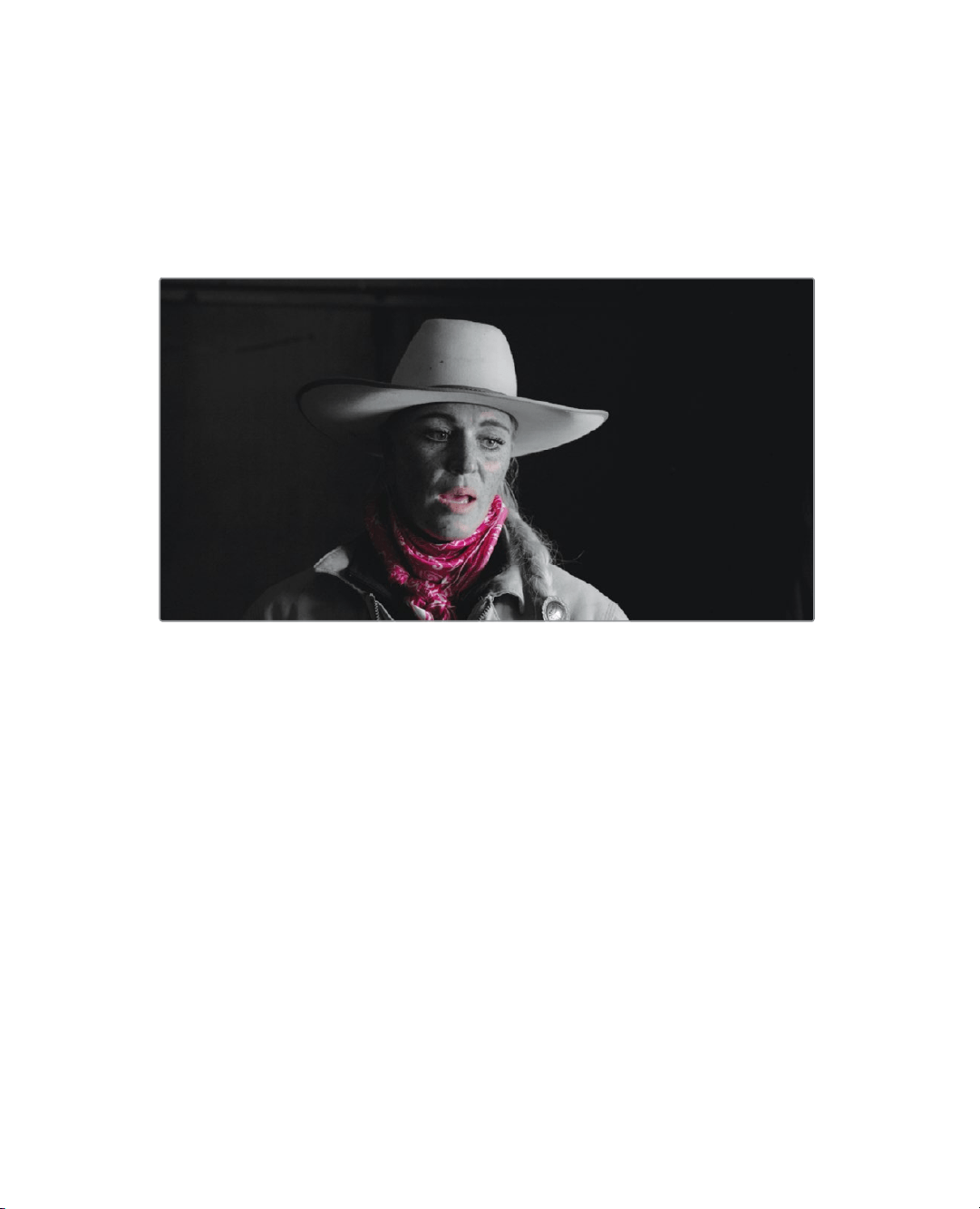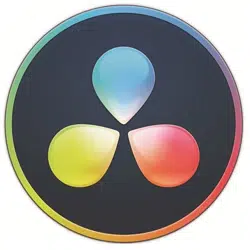Loading ...
Loading ...
Loading ...

375
Combining Qualifiers and PowerWindows
A third node is now present in the Node graph. As with previous nodes you’ve created,
it will share a connection with the preceding node via the green RGB input/output
circles. However, this time you’ll see a new connection: the key input/output blue
triangles. The key is the portion of the image that you isolated using the qualifier tool.
When you create an outside node, it receives the key from the previous node and
automatically inverts it.
2 With node 03 selected, in the adjustment controls strip, drag the Sat field to a value of 0.
You can increase the drama in this shot by increasing the contrast in the black-and-
white portion of the image.
3 With node 03 selected, in the adjustment controls strip, drag the Contrast slider to 1.1.
The ability to reuse key data is a beneficial component of node-based workflows. It
speedsup the grading process by requiring you to perform only a single key, and reuse
itmultipletimes.
Combining Qualifiers and
PowerWindows
Like qualifiers, Power Windows allow you to specify which area of the image you want to
alter. Unlike using a qualifier, Power Windows do not rely on a selection of hues, but rather
a spline shape within the frame that identifies the area you want to mask out.
You can refine an area of the frame you want to modify even more precisely by using
qualifier and power windows together. Often, an image will have several instances of a
huethat you are trying to manipulate. Instead of focusing your efforts on cleaning up the
selection in the qualifier palette (and likely compromising the quality of the key), sometimes
Loading ...
Loading ...
Loading ...
